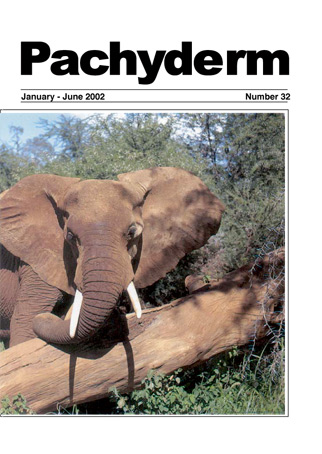High incidence of elephant twin births in Tarangire National Park, Tanzania
DOI:
https://doi.org/10.69649/pachyderm.v32i1.1087Abstract
Twin births have been remarkably common among 139 individually known adult female elephants studied since 1992/93 in Tarangire NP. 14 or almost 5% of the 291 recorded births have been twins: seven sets have consisted of five sets of a male and a female, and two sets of twin females. The interbirth intervals of 3, 3, 4, and 6 years, following these twin births thus far are not very different from the 4.5 year interval noted for the nearby Amboseli NP elephants (Moss, 2001). One female produced three of the sets consisting of a male and female with the births occurring mid 1992, April 1996, and April 1999. A second female within the same family group, probably a sister, produced one set of twins and had a single male calf four years later. Mortality among twins was high with 6 or 43% of the 14 dying by the age of five. This may be due to inadequate nutrition when two calves are suckling , or perhaps it is more difficult for the cow to keep watch over them. The population of Tarangire NP has been growing rapidly since 1994 with females and infants increasing at an average rate of 10% per year. Besides perhaps being genetically predisposed this apparent surge of twinning in Tarangire may have been due in part to the reduction of poaching, and the resulting stabilization of elephant movement and aggregation patterns since 1989, and/or to the exceptional vegetation available as a result of several sequential wet seasons associated with the El Nino phenomenon. A eight year old male elephant, upon the death of their mother, adopted his three month old female sisters. All three of these three young elephants appeared healthy during the six months they were observed .
Downloads
Published
How to Cite
Issue
Section
License
Copyright (c) 2002 Charles A. H. Foley

This work is licensed under a Creative Commons Attribution-NonCommercial 4.0 International License.




